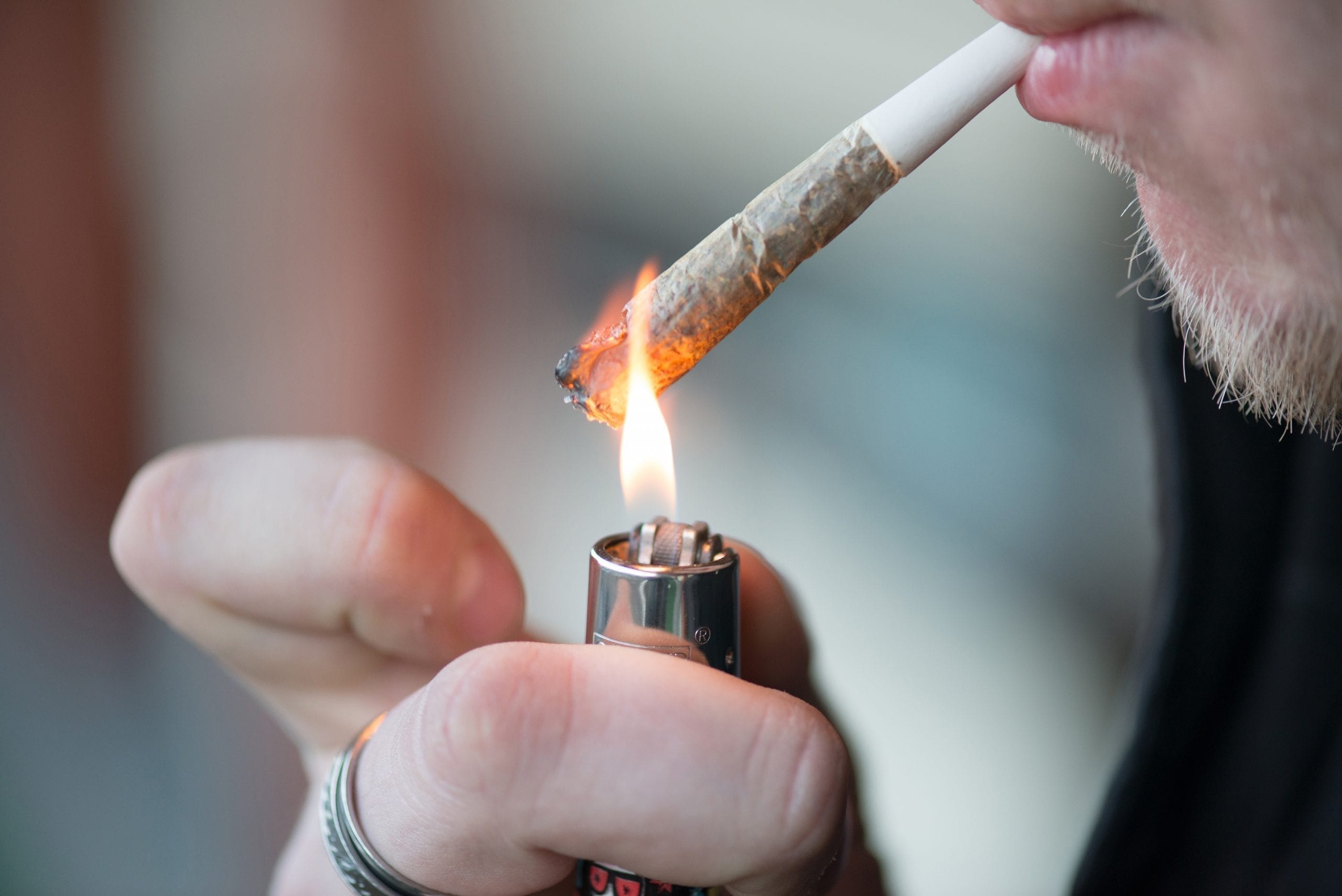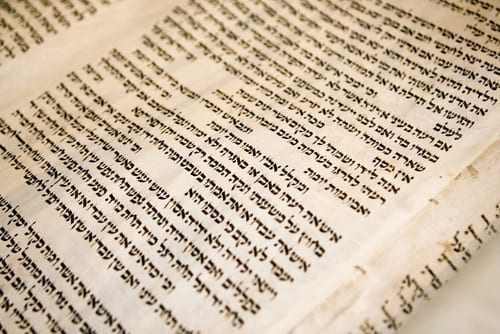“There’s something about the smell of old sefarim that I just love!” I once exclaimed to my wife. She responded, “That’s not the smell of antiquity, it’s the smell of old cigarettes!” She was right.
When I first came to Lakewood, I was using an old shtender that, oddly enough, had holes drilled into its side. It was explained to me that it was made years before, when smoking in the beis midrash was common and ashtrays were bolted onto each shtender! Someone else told me that at the end of the day there would be a blue cloud hanging over the beis midrash where he had learned some 40 years ago. Although there was once a heter to smoke in a beis midrash (see Shaarei Teshuvah 154:20), it’s hard to be meikil today, especially in America (see below).
For a long time after Sir Walter Raleigh popularized the use of tobacco in Europe, the dangers of smoking were unknown. In fact, decades ago, American magazines were filled with advertisements touting smoking as beneficial for one’s health, or claiming that a particular brand was recommended by doctors: “More doctors smoke Camel than any other cigarette!”
Slowly, this attitude began to change—in 1958 only 44% of Americans believed that smoking could lead to cancer—coming to a head with the Surgeon General’s famous 1964 report on the dangers associated with the practice.
Things have changed in the yeshivah world as well. By the time I arrived in yeshivah, smoking was, to say the least, frowned upon by the hanhalah, carrying with it the risk of being expelled, and such is the rule in almost all American yeshivos today. Rav Meir Stern once asked me, after discovering that I was a smoker, if I would like to join him on a trip to an ICU or cancer ward. Rav Meir Stern is a prince of a man, and I still shudder at the memory of such harsh words coming from his mouth. But when I finally did quit several years later, his were the words that echoed in my mind.
In truth, we already find the Chofetz Chaim writing negatively about smoking, at a time when it was quite popular (Likkutei Amarim 13). Nevertheless, he seems to allow smoking on Yom Tov in his halachic writings (see below).
The Nishmas Avraham (Orach Chayim siman 503) even brings down the Birkei Yosef (Machzik Brachah, Orach Chayim siman 210:13) who writes that his grandfather once asked in a dream what they think about smoking in shamayim. The answer was that anyone who smokes on Yom Tov is put in cheirem!
I often hear baalei batim complaining about the pervasiveness of smoking among yeshivah bachurim, and while I don’t wish to diminish their concern, a little perspective might help. In my time in yeshivah, about 10% of bachurim were regular smokers. (While this figure is purely anecdotal, it can’t be far off from the truth, as all smokers generally knew each other.) That number is far lower than you would find on a typical college campus. Moreover, a recent survey in Israel reported that 17% of chareidim smoked compared to 28% of the general public. That being said, yeshivah bachurim must be made aware of the chillul Hashem smoking represents in contemporary society. Many corporations and businesses forbid their uniformed employees from smoking, and “G-d’s army” mustn’t have any lower a standard.
Smoking on Yom Tov:
The Pnei Yehoshua (for whom the Baal Shem Tov once served as a shochet) makes several references to smoking (Shabbos 39b). He is often falsely quoted as saying that smoking is healthful. (I actually saw this once in an article attempting to prove that halachah can change with new information.) In a discussion of smoking on Yom Tov, the Pnei Yehoshua writes that as long as one is doing something that benefits him in a physical way, like smoking, “which helps with digestion and appetite,” it is permissible. However, this halachic argument is outside the purview of overall health. The Yaavetz (Siddur Beis Yaakov, on Tishah B’Av) uses the same logic with regard to smoking on a taanis, explaining that as long as it done to alleviate stomach ailments rather than for pleasure, it is allowed.
As for smoking on Yom Tov in contemporary times, while Rav Moshe (Igros Moshe, Ohr Hachayim 5:34) seems to be lenient, many others are stringent. I am sure that many readers will disagree, but the goal here should be to get one to actually quit rather than turn so many into mechallelei Yom Tov. When I was a smoker—and boy, was I ever—I wouldn’t hear of not smoking on Yom Tov, and even once paid a friend to walk all the way to Dayan Fisher, zt”l, known for kulos in this area, to ask if I could. The shu”t Teshuvos V’hanhagos (1:316) quotes a general assumption that seems to imply that even those who allow smoking on Yom Tov are referring only to those who are addicted, for whom the cessation of smoking for a couple of days would negatively impact their simchas Yom Tov. Piskei Teshuvos (511; footnote #57) cites a source for this view in the Sedei Chemed. See also Shemiras Shabbos K’Hilchasah 13:7.
People who are lenient should be cognizant that there are innumerable halachic factors involved. The Piskei Teshuvos (siman 511:11) lists seven different concerns regarding smoking on Yom Tov: Is one allowed to light a cigarette from candles that have been lit l’kavod Yom Tov? Is it permissible to smoke cigarettes with words printed on them? There are also other concerns, such as whether or not one is allowed to smoke in a sukkah and leave ashes there, and the permissibility of carrying more cigarettes than needed on Yom Tov. (Rav Moshe, in two separate teshuvos, allows that.)
Kashrut and fast days:
The old joke in yeshivah went like this: Why don’t we make a “Shehecheyanu” on our first cigarette? For an American: Because it’s always in a bathroom. For an Israeli: Because they’re too young to recite a brachah. All kidding aside, there are many real halachic issues involved. The following is an excerpt of a recent news report:
University of Sydney Professor in Public Health Simon Chapman points to recent Dutch research that identified 185 different industrial uses of the pig, including the use of its hemoglobin in cigarette filters.
Professor Chapman said that the research offered an insight into the otherwise secretive world of cigarette manufacture, and was likely to raise concerns for devout Muslims and Jews. “I think there would be some particularly devout groups who would find the idea of pig products in cigarettes to be very offensive,” he stated. “The Jewish community certainly takes these matters extremely seriously, as does the Islamic community and many vegetarians.” The researchers found that pig hemoglobin, a blood protein, was being used to increase the effectiveness of cigarette filters at trapping harmful chemicals before they can enter a smoker’s lungs. Professor Chapman said that while tobacco companies generally list their products’ ingredients on their websites, they also note undisclosed “processing aids…that are not significantly present in and do not functionally affect the finished product.”
Would this be a halachic issue? Well, it depends on whether or not smoking is considered like eating. The Pri Chadash warns us not to light a cigarette from a candle made of cheilev (forbidden fats) unless one lights it from the very top of the flame so there is no possibility of cheilev getting onto the cigarette. Cheilev, of course, is only forbidden to eat, while deriving pleasure from it in other ways is permissible. We therefore see (refer to footnote in shu”t Yechaveh Daas 2:17 at length) that, at least according to the Pri Chadash, smoking is not a simple hana’ah (pleasure) but falls under the halachic rubric of eating and drinking.
While I would assume that the amount of pig blood found in cigarettes is negligible, should it prove to be significant then according to him it would indeed be problematic, although rabbinical in nature (especially since it would already be cooked by the time one “eats” it).
The Shaar Hamelech (see article by this writer in the Torah journal Haamek entitled “Lifnei Iveir” in which this is discussed at length; Hilchos Maachalos Asuros, Chapter 13) discusses cigarettes flavored with non-kosher wine. Although he is lenient for a number of reasons, he nonetheless recommends being strict. Rav Ovadia Yosef (ibid.) deduces from this that the Shaar Hamelech disagrees with the Pri Chadash and is of the opinion that smoking is simply a pleasure, albeit a physical one, and does not fall into the category of eating. Citing this reason, shu”t Matei Yehudah siman 210 explains that this is why we do not recite a birkas hanehenin before smoking. A similar line of reasoning is used to explain why there is no brachah acharonah on a smell (see Magen Avraham and Chazon Ish Orach Chayim 25).
Indeed, some authorities allow smoking on fast days, including Tishah B’Av, precisely because it is not considered to be in the category of eating (e.g., shu”t Har Hakarem siman 19). The Chofetz Chaim (Mishnah Berurah 556; s’if katan #8) strongly disagrees and prohibits smoking on any taanis, especially Tishah B’Av—on pain of excommunication! Others are more lenient (Yabia Omer 1:33) and allow one to be meikil in private.
Smoking in a Shul or Beit midrash:
The Gemara teaches (Megillah 28) that kalus rosh (levity) in synagogues and study halls is prohibited, and this includes eating and drinking. It is, however, permissible to be more lenient in a beis midrash if someone spends most of his day there, even though it has a higher degree of sanctity.
Rav Moshe (Igros Moshe Choshen Mishpat 2:18) rules that if someone there is bothered by cigarette smoke, then it is certainly forbidden to smoke in a shul. He goes on to say that even if one’s smoking in his private home is proven to bother a neighbor, then one would have to cease smoking in his home!
Some have made the point that even if smoking in a beis midrash is technically allowed (as long as it isn’t bothering anyone else), we still shouldn’t allow it, since non-Jews are careful not to smoke in their places of worship and it would be a chillul Hashem if we did. (However, nonJews are not generally encouraged to enter a beis midrash except mishum darkei shalom, especially if they have religious paraphernalia on them; see shu”t Har Tzvi siman 85 and Yabia Omer Yoreh Dei’ah 3:15.)
Posing a danger to life:
So what is the halachic view of smoking in general? There are many discussions on this topic, starting with Igros Moshe Choshen Mishpat 2:76 and Tzitz Eliezer 15:39.
After a lengthy discussion, the Gemara in Chullin 9b-10a concludes with the famous phrase, “chamira sakanta mei’isura,” meaning that halachah is more stringent when it comes to physical danger than it is with other matters.
The Talmud (Brachos 32b, 55a, Rosh Hashanah 16b, Shavuos 36a) speaks harshly of those who put themselves at risk, and the Shulchan Aruch rules (Choshen Mishpat 427:8) that there is a positive commandment to remove, guard against, and be very fastidious regarding any practice that poses a risk to one’s life. The Chochmas Adam adds that those who see this and do not do anything to stop it or remove it are also liable. It would seem from here (see also Marcheshes 3:29) that there is both a positive mitzvah to protect life and a negative mitzvah prohibiting dangerous actions.
The Be’er Hagolah (ad loc) explains that taking such an action demonstrates a casual, laissez-faire attitude toward the precious life Hashem has blessed one with and the mitzvos one cannot perform unless one is alive.
[Surprising though it may be to some, there is significant debate whether this obligation is biblical or rabbinic in nature (see e.g. Levush in Ir Shoshan 426:11 and Tosfos Yom Tov, Berachos 3:4 who hold it is rabbinic; see e.g. shu”t Noda Bi’Yehudah, kama, #10, Aruch HaShulchan c”m 427:8 for the majority view that it is biblical).]
A frightening statement is found in the Sefer Chasidim (siman 675) asserting that anyone who dies through his own negligent actions will have to come to din for causing his own demise!
In order to give perspective to the whole topic, it is worthwhile to briefly discuss sakanah in cases of need as opposed to reshus (choice), like smoking.
The prohibition against putting our bodies at risk is so severe that Rav Moshe Feinstein (Yoreh Dei’ah 2:74; see also Dibros Moshe on Shabbos 32a) disallows the induction of labor unless either the mother’s or baby’s life is at risk, due to the prohibition of putting ourselves in sakanah. He explains that since Hashem gave us the commandment to procreate, He clearly allows for the risk of giving birth but no more than that, and one cannot choose on one’s own when to assume that risk. In a later teshuvah (Yoreh Dei’ah 3:36) he discusses risky surgeries and rules that one would not be allowed to undergo such procedures for the sake of eliminating pain (not all agree with this psak), and further argues that if someone is very ill and might die without a risky intervention, while he may be allowed to undergo it, he is by no means obligated.
As to how much risk is permissible in order to extend life, see Avodah Zarah 27, shu”t Chasam Sofer Yoreh Dei’ah 76, shu”t Achiezer 2:16, Igros Moshe and others. Some hold that as long as there is at least a 50% chance of survival, a risky procedure would be allowed, while others allow a patient to take on an even greater risk.
If we find such discussion regarding inducing labor and risky-yet-beneficial procedures, how much more so must we be stringent regarding the risks of smoking, which serves no benefit or need!
While on the one hand we have the mitzvah d’oraisa, “v’nishmartem me’od l’nafshoseichem” (Devarim 4:9,15), we must be very careful to protect our bodies from harm; on the other hand, not all dangers are forbidden.
In fact, there is a complicated principle based on another pasuk, “shomer pesayim Hashem,” meaning that Hashem guards simpletons (Tehillim 116:6; see Shabbos 129b, Yevamos 72a, et al.). If a certain practice is considered to be a tolerable risk and is not shunned by society, it might be allowed. Because the world is filled with innumerable risks, it would be difficult to know what we can and cannot do. Therefore, one yardstick we have is the “ways of the world,” which, under certain conditions, may be followed (see Rav Elchanan Wasserman to Kesubos 136).
As Rav Shlomo Zalman Auerbach pointed out in a letter to Dr. Abraham Abraham (as did the Tzitz Eliezer in a teshuvah), the Rambam lists various foods that are dangerous in both Hilchos Dei’os and Hilchos Rotzei’ach U’shmiras Hanefesh. While the foods on the latter list would seem to be clearly asur mamash (forbidden in the strictest sense), those on the former are only severely frowned upon. Rav Moshe (ibid.) points out that there are many foods that might shorten a person’s life yet aren’t viewed as asur mamash; smoking, he argues, should fall into this category. Many point to this teshuvah as proof that smoking is permissible. We will return to rulings of Rav Moshe at the end of this article.
What, then, is the distinction between a tolerable risk in halachah and one that is not tolerated?
Rav Chaim Ozer (Achiezer 1:22) and the Aruch La’Ner (Binyan Tziyon 1:137) seem to have different criteria, but it is clear that a risk that is accepted by the masses and is common—like air or car travel (the Steipler is quoted as saying that if the Sanhedrin were around they would ban cars!)—falls into the former, more permissive category. Today, however, it is hard to argue that smoking falls into the permissive category.
As Rav Shternbuch succinctly put it (shu”t Teshuvos V’hanhagos 1:316), we cannot choose to obey doctors when they allow us to eat on Yom Kippur and conveniently ignore them when they are stringent regarding other matters (like smoking). Rav Ephraim Greenblatt (Rivevos Efraim 8:586), a foremost disciple of Rav Moshe, posits that the dispensation for accepted risk no longer applies to smoking, as contemporary culture clearly rejects this vice nowadays.
As for the argument put forth by some that dangers that accrue over a long period of time do not fall under the rubric of “guard yourselves,” I would counter—as a former smoker—that the ill effects of smoking are both immediate and long term. Indeed, the mortality rate for a smoker over 45 goes up 85% compared to non-smokers! It’s only a “long-term,” theoretical problem before the CAT scan, lo aleinu.
Yeshivah bachurim who spend their days engrossed in Torah and wish to avoid kol minei isur are simply seeking a kosher recreational diversion; this we understand. However, we must get it through to them that smoking is simply not one of these.
One unnerving statement about smoking, considering its source, was written by Rav Dessler (Michtav Mei’Eliyahu, Volume 1, page 79): “I intuit and it is intellectually certain to me…that smoking cigarettes is bad for my health…nevertheless, I go ahead and [continue to] smoke. Why is this? Clearly an emotional attachment cannot be overridden by that which I know rationally.”
Once, while still in Gateshead, Rav Dessler hung up a sign on his office door announcing that he had officially quit smoking. He explained that he was testing himself to see which temptation is greater: his desire to continue smoking, or his desire to be seen as a man of truth!
As a former smoker myself, I can relate to the following words of Rav Shach: “When I used to smoke, I thought I could never understand a Tosafos without a cigarette. Now that I quit, I don’t know how I ever managed to learn with a cigarette!”
At one point, Rav Hirsch was so addicted to snuff that, before retiring one evening, he found himself placing his snuffbox under his pillow in case he wanted a pinch in the middle of the night. Shocked at the power his habit had over him, he quit that night, never to touch it again.
Today, the vast majority of major poskim, including Rav Shmuel Auerbach, Rav Elyashiv, Rav Scheinberg and the Tzitz Eliezer, have come out and declared that smoking is forbidden.
While smoking was permitted by Rav Moshe, it must be pointed out that the concept of acceptable risk disappears should the culture be keenly aware of the dangers of a certain practice, and if its risks are shown to be both present and long term (see Kesubos 39b with Rashi). Halachah is not magic, and one cannot blindly apply a teshuvah to modern times without a deep understanding of the reasons behind it and whether they still apply.
Moreover, Rav Moshe was not writing in a time when it was considered a chillul Hashem for a ben Torah to smoke in public. Personally, although I knew I had to quit, it was the invitation to be a scholar in residence in the Five Towns one Shavuos that proved to be the catalyst. I just wouldn’t allow myself to be seen in public that way.
Furthermore, the issue of taking on a new addiction or a new demanding pleasure is discussed elsewhere by Rav Moshe (Yoreh Dei’ah 3:35) and he is very strict. While it is true that many tzaddikim smoked (as Rav Moshe points out in his reluctance to ban smoking), there have also been many who quit once they learned of its dangers. We cannot pick and choose our maasei rav (halachah based on the practices of our sages). Should someone choose to live in every way like those great men who smoked, then perhaps that argument would have more weight.
In truth, the negius of an addiction is so profound that it causes one to wonder if such an addict should be the one deciding if his addiction of choice is halachically acceptable (see, however, the amazing words of the Chazon Ish in Emunah U’Bitachon 3:30—quoted in Shaarei Aharon to Devarim 16:19—where he explains that often halachah does indeed allow one who has something to gain or lose from a psak to be the arbiter).
The Midrash Tanchuma (Shemini 11) relates the story of a son who slowly weaned his drunken father off his dependence on alcohol. When he felt it was safe to let him out of the house, they went for a walk and came upon an old drinking buddy of his father’s. The friend was lying in his own filth in the middle of the road, laughing to himself. Hoping that his father would now see the indignity associated with drunkenness, the son pointed him out to his father. However, the father ran over to his old friend and whispered in his ear, “Where did you find such good wine?”
Citing the above and Esther Rabbah (5:1) the Gra interprets the verse in Mishlei (23:35), “They struck me and I did not become ill,” as symbolic of an alcoholic who becomes oblivious to alcohol’s negative effects and even claims that his addiction is virtuous—a sort of Stockholm syndrome! (See ArtScroll’s Esther Rabbah ad loc., footnote 28 and Insights A, for further elaboration.)
[For a wonderful treatment of this topic and on addiction in general, see the various writings of Rabbi Shais Taub and Judaism and Psychology by Moshe Halevi Spero, Ktav Publishing, Yeshiva University Press, 1980, pages 120-141.] For those who are smokers, let me end with the following.
I loved smoking. I thought I could never quit. One day, however, I walked into yeshivah and a friend told me he had quit. “How did you do it?” I asked. He replied, “It was the easiest thing I’ve ever done.”
I adopted his attitude and eventually, when I was ready, quit myself. While it wasn’t as easy as he made it out to be, his refusal to give in to its grip and fight it helped me more than he will ever know. I hope it helps you too.





